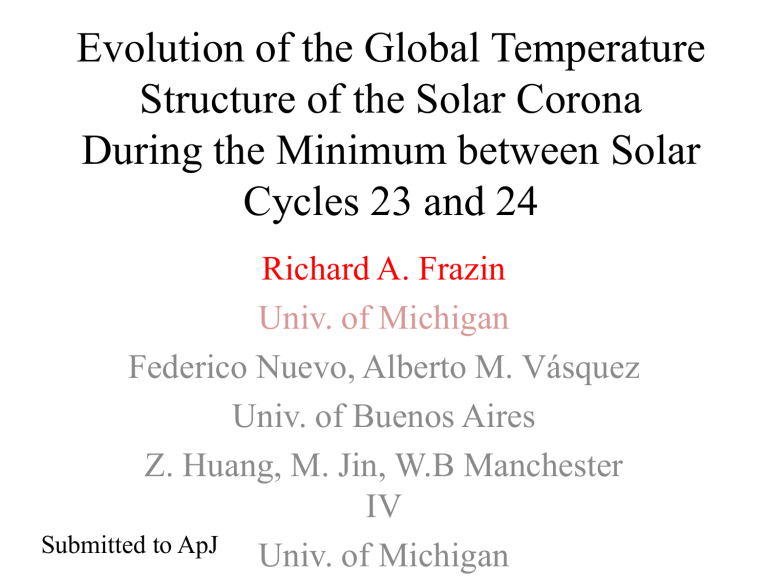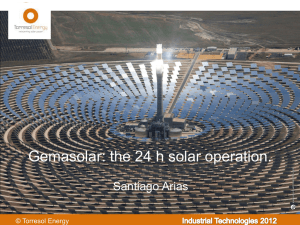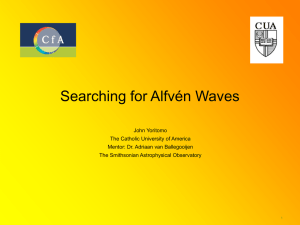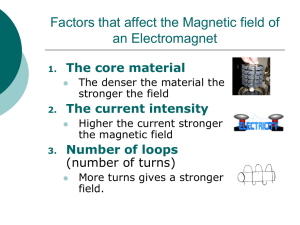Evolution of the global temperature structure of the corona

Evolution of the Global Temperature
Structure of the Solar Corona
During the Minimum between Solar
Cycles 23 and 24
Richard A. Frazin
Univ. of Michigan
Federico Nuevo, Alberto M. Vásquez
Univ. of Buenos Aires
Z. Huang, M. Jin, W.B Manchester
IV
Submitted to ApJ
Univ. of Michigan
Observations
•
In paper I (Huang et al. 2012, ApJ, 755), we showed that solar minimum, quiet-Sun coronal loops exhibited new structures we dubbed
``down-loops” - loops in which the temperature decreases with height.
•
The down loops stand in contrast with the expected ``up-loops,” in which the temperature increases with height.
Observations, con’t
•
We found the quiet-Sun up- and down-loops using the MLDT (Michigan Loop Diagnostic
Technique). The MLDT involves several steps:
–
Perform EUV tomography in several bands (in this case EUVI-B 171, 195, 284) with 28 days of data
–
Given the EUV tomography, calculate the Local
Differential Emission Measure (LDEM) distribution. Then, taking moments, determine the electron density N and temperature T.
–
Create a Potential Field Source Surface (PFSS) model, based on a synoptic magnetogram
Observations, con’t
–
Trace the the PFSS field lines through the tomographic grid and obtain N and T profiles along thousands of loops
–
As the quiet-Sun corona appears as diffuse emission, EUV images do not allow one to identify field lines
•
Thus, the MLDT allowed the first study of individual quiet-Sun loops
Temperature Maps at 1.075 Rs from
DEMT
CR2077
CR2081
Temperature Profiles of Up & Down
Loops
Density Profiles of Up & Down Loops
•
We found that down loops are confined to low latitudes!
CR2077
CR2081
In order to show the down loops are not an artifact of tomography, we did
DEM without it
CR2081, notice downward temperature gradients near the equator
Anti-correlation of down-loop population with sunspot number!
sunspot number
Relationship between grad T and T for up and down loops
Relationship between grad T and λ for up and down loops more scatter in the up loops
evidence of different heating physics?
Relationship between grad T and β for up and down loops
Table of β values
So, what’s going on?
•
The down loops are most prominent at low latitudes at dead solar minimum, and their population quickly decreases with increasing solar activity
•
Down loops have stronger correlations between grad T and T, and especially, λ
(pressure scale height) than do up loops.
•
Down loops are associated with much higher values of β than are up loops.
Con’t
•
These findings suggest that the physics of heating the up and down loops is different.
•
Critically, the down-loops are associated with
β > 1, due to the weaker field at the equator, while up-loops have β < 1.
•
Hydrostatic coronal loop computations show that down-loops are obtained when all of the heating is applied to the foot-points of a loop, while up-loops are obtained when the heating is more uniform (Serio et al. 1981)
Con’t
•
Matsumoto & Suzuki (2012) performed selfconsistent 2.5D MHD solutions from the photosphere to beyond the sonic point. They found that Alfvenic fluctuations created in the photosphere and chromosphere (≈3 min timescale) are transmitted into the corona.
•
When β≈1 nonlinear processes convert the
Alfvenic modes into compressive modes
–
These compressive modes form shocks and also are also damped by heat conduction, providing the heating in the low corona
down-loops?
Con’t
•
When β < 1, the nonlinear processes that lead to mode conversion are muted, and little energy is put into compressive modes
The Alfvén waves then provide the heating via wave reflection (to provide counter-propagating waves) followed by turbulent cascades
up-loops?
•
This paradigm also seems to explain why individual loops cannot be seen in the quiet-Sun corona: everything is heated fairly uniformly by
Alfvén waves supplied by the photosphere and chromosphere, and there is little to distinguish neighboring flux tubes.
C’est Tout
Con’t
•
The relatively small differences in temperatures between the up- and down-loop is also explained by the fact that both types of loops are heated by the same Alfvén waves.











